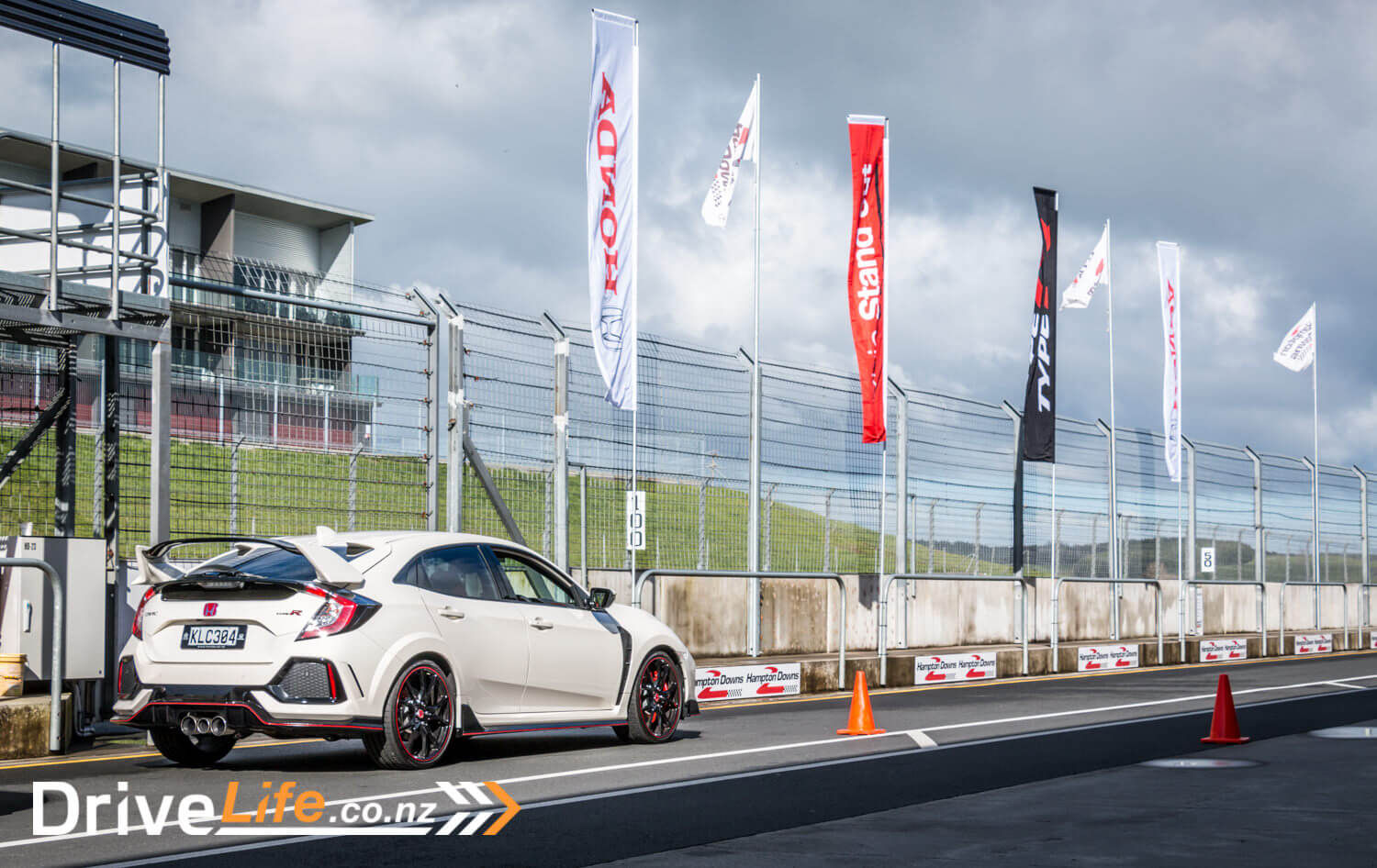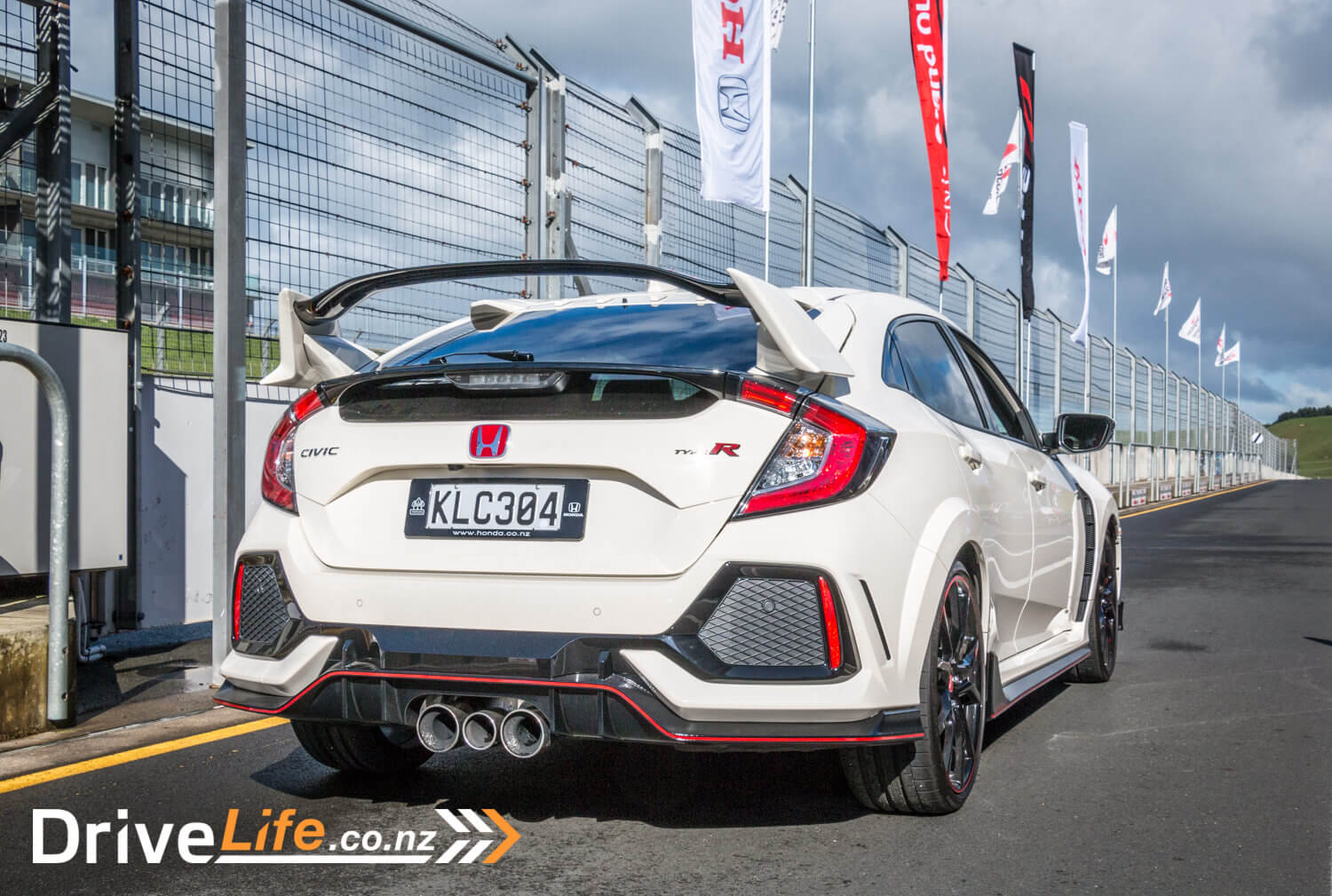The new Honda Civic Type R has been getting a LOT of attention from the world’s motoring press, and without exception, everything I’ve read about it has been glowing with praise. So you can imagine my excitement when I was invited to the New Zealand launch at Hampton Downs Racetrack to get the chance to drive it for myself.
With all of this hype and praise, the Type-R is set to become the new halo car for Honda, despite the international launch of the new NSX. At $59,900 it’s an attainable performance car for many more people than the hybrid supercar. Honda have already pre-sold 46 of them – the whole September shipment of 30 cars and a big chunk of December’s shipment too.
The Type-R is based on the four door hatchback version of the 10th generation Civic but with significant engineering, aerodynamics and performance changes.
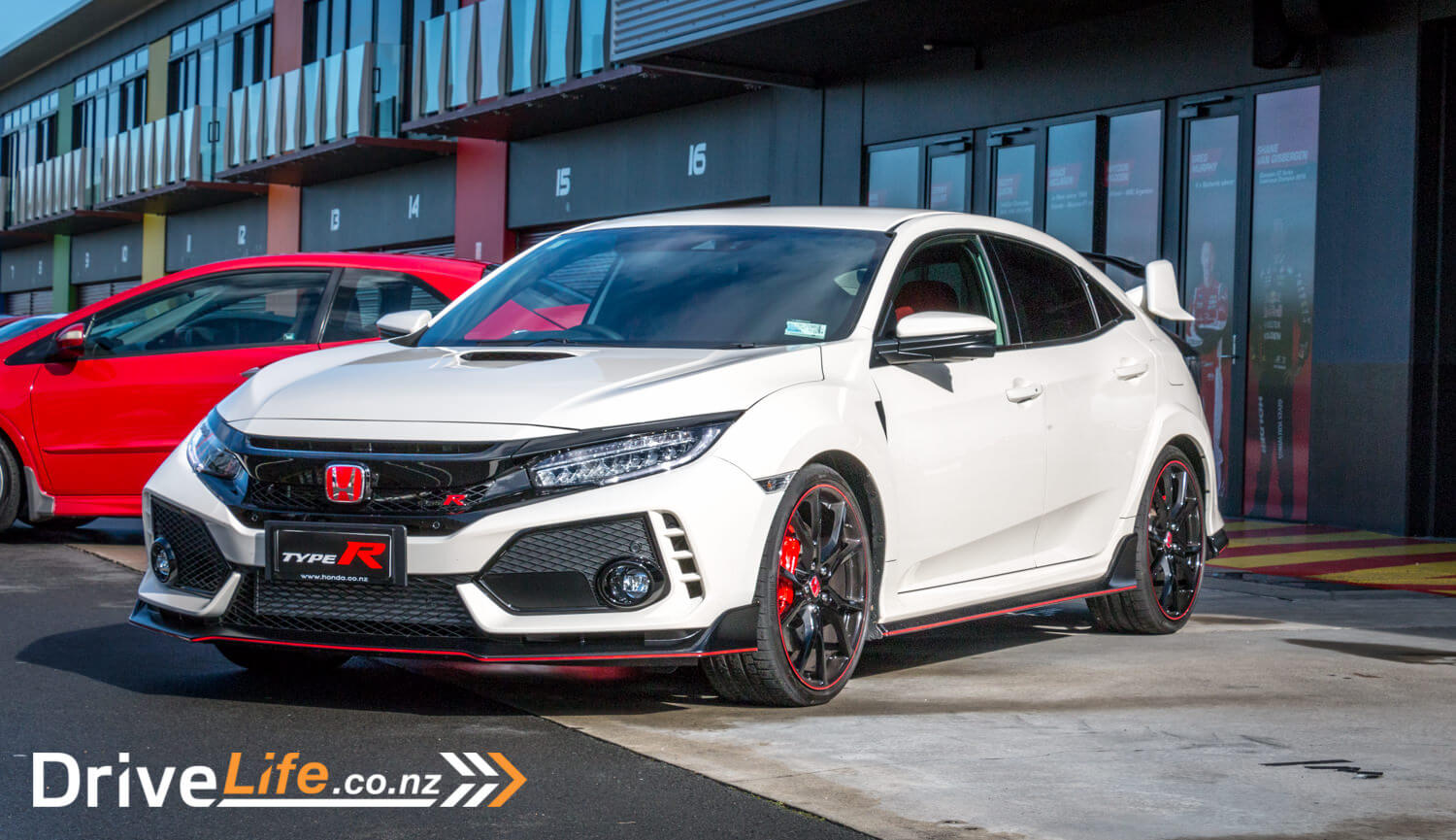
The Technical Stuff
It’s front-wheel drive only, despite having a 2.0 litre VTEC turbo engine which makes 228kW and 400Nm of torque. Peak torque is available from 2500 to 4500rpm. There’s some clever technology: VTEC is used to vary exhaust valve lift to reduce turbo lag at lower rpm. An electric wastegate enables a higher degree of boost control over a conventional type. The cylinder head has a two-piece water-cooled manifold to lower exhaust gas and combustion chamber temperatures. Each piston also features a cooling channel to provide increased oil flow, which dramatically increases knock resistance.
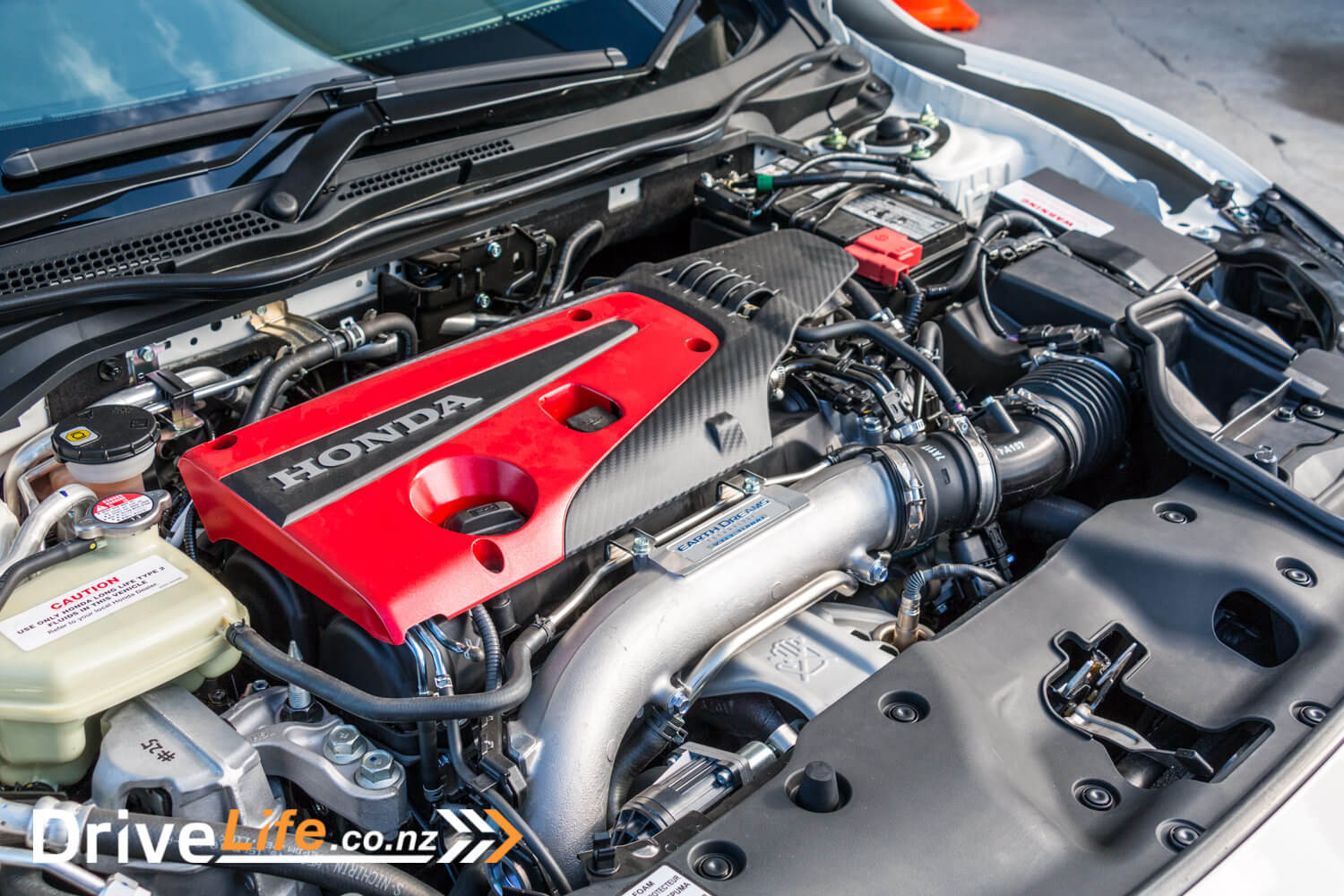
To keep you from torque-steering off the road, Honda have added a limited-slip diff, widened the track significantly and changed to a dual-axis front strut. At the rear there’s multi-link suspension to improve ride and stability. Added to this are adaptive dampers which continuously monitor and vary the damping force, as well as enabling three different drive modes – Comfort, Sport and +R.
Braking is provided by four-piston Brembo front calipers with ventilated 350 mm discs, and solid 305mm discs at the rear. These are housed under 20” gloss black wheels shod with 245/30 Continental tyres.
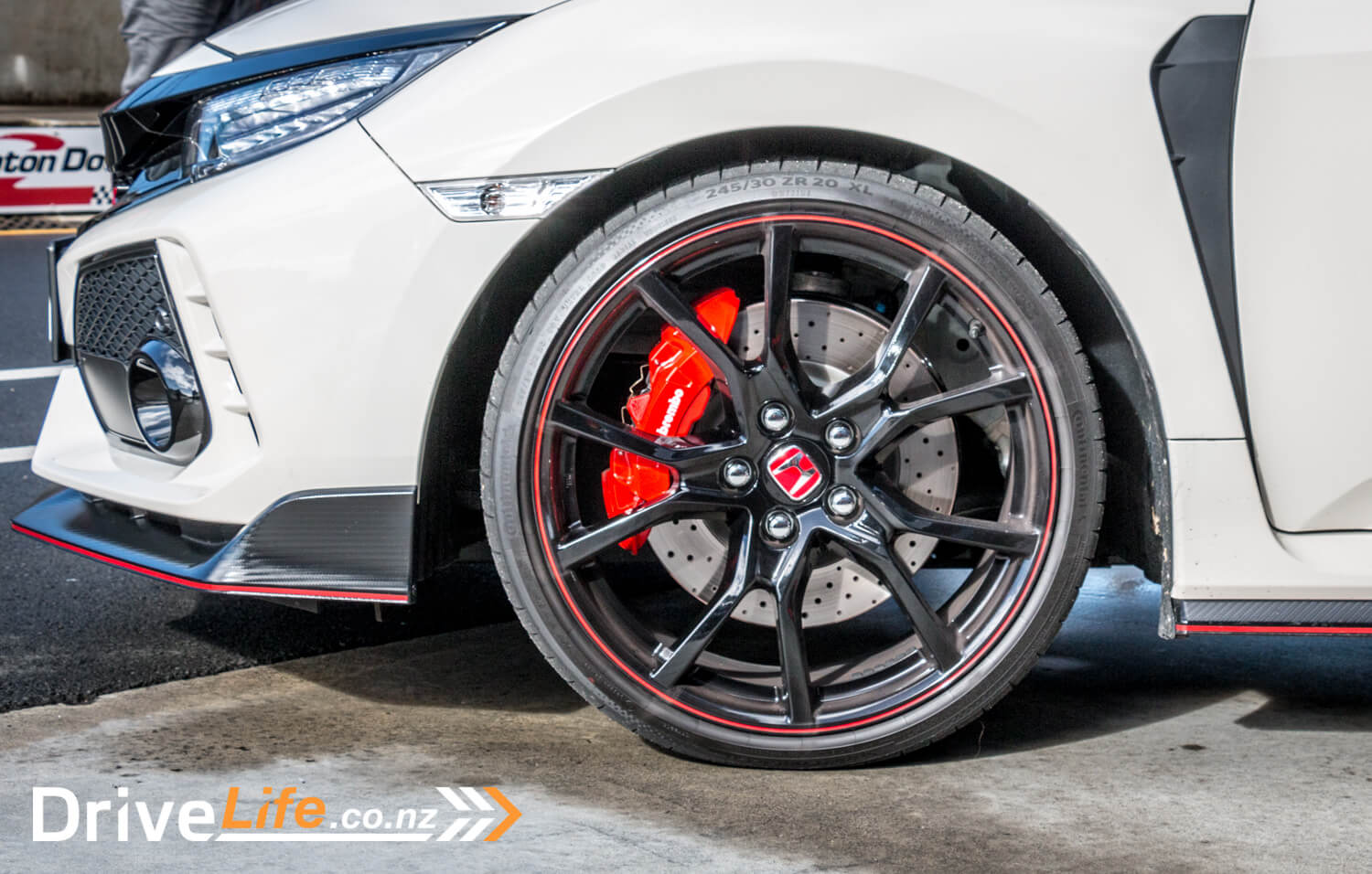
The Type-R has Honda’s Agile Handling Assist system which works really well in the everyday models. It has been re-tuned specifically for the Type-R. AHA applies a light braking force to the inner wheels when the steering wheel is turned to improve responsiveness and stability. AHA also improves the LSD effect by reducing the inner wheel slip during mid-corner acceleration.
Transmission is a six-speed manual with a single-mass flywheel. A CVT or auto would have been too heavy and just wasn’t an option for the Type-R’s designer. I heartily approve of this decision.
All this means a 0-100 time of 5.7 seconds and a top speed of 272kph.
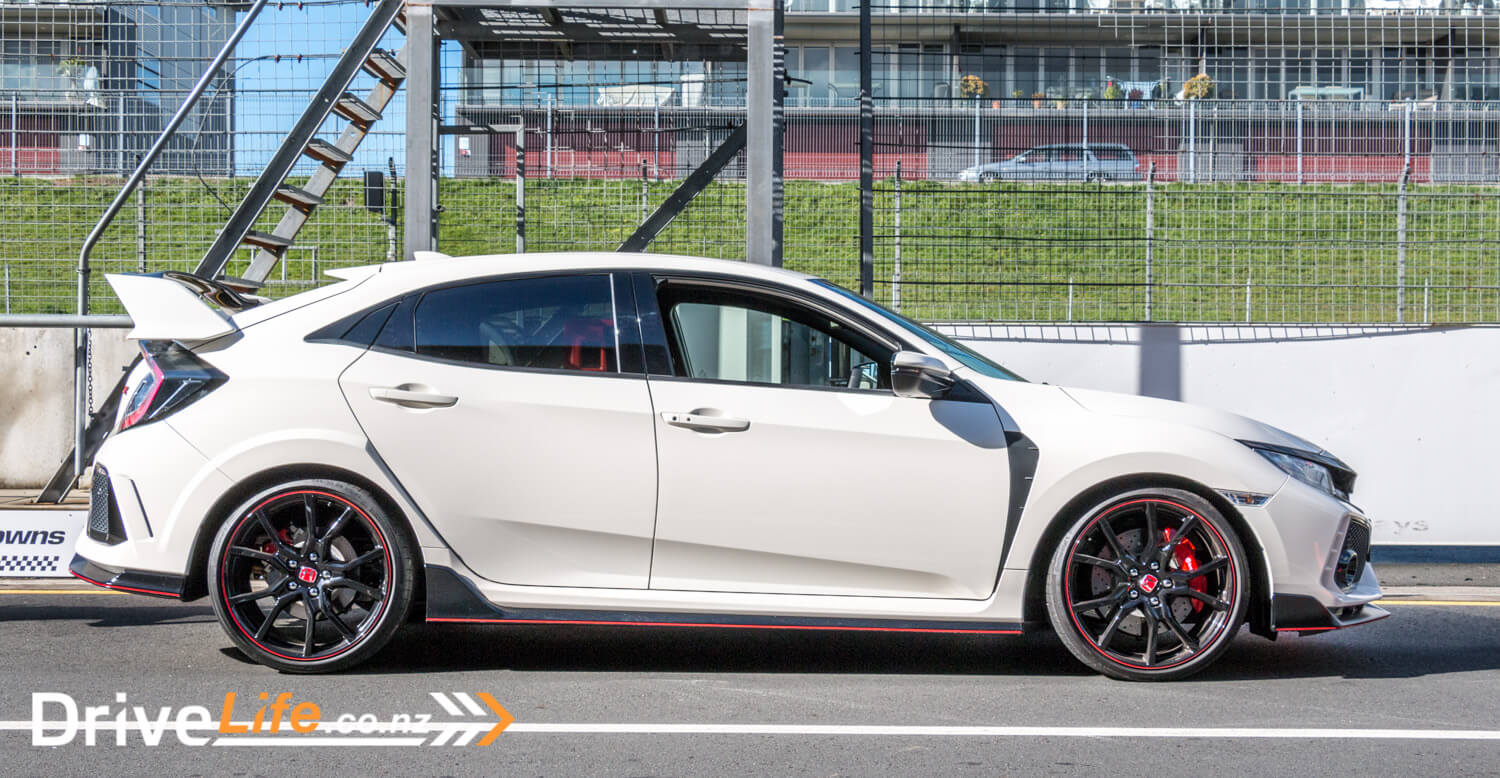
The Looks
Okay it’s time to talk about how it looks. Personally I think it’s fantastic that Honda seem to have gone a bit mental with the spoilers and aero on this car. I think it looks great and works really well as a complete package. And it’s all functional. Ducts at the front provide brake cooling. The vent in the bonnet pushes air down the rear of the engine for essential cooling effect. The underside has been smoothed and flattened to provide better aerodynamics. There’s a diffuser in the rear bumper, vortex generator on the rear roof and peaks on each side of the roof which all help funnel air to that huge rear wing. The overall effect is a chunky wide-bodied, muscular effect with a definite Japanese flair. I love it. My wife thinks it’s ridiculous. It will certainly get attention- possibly the wrong sort – at the traffic lights.
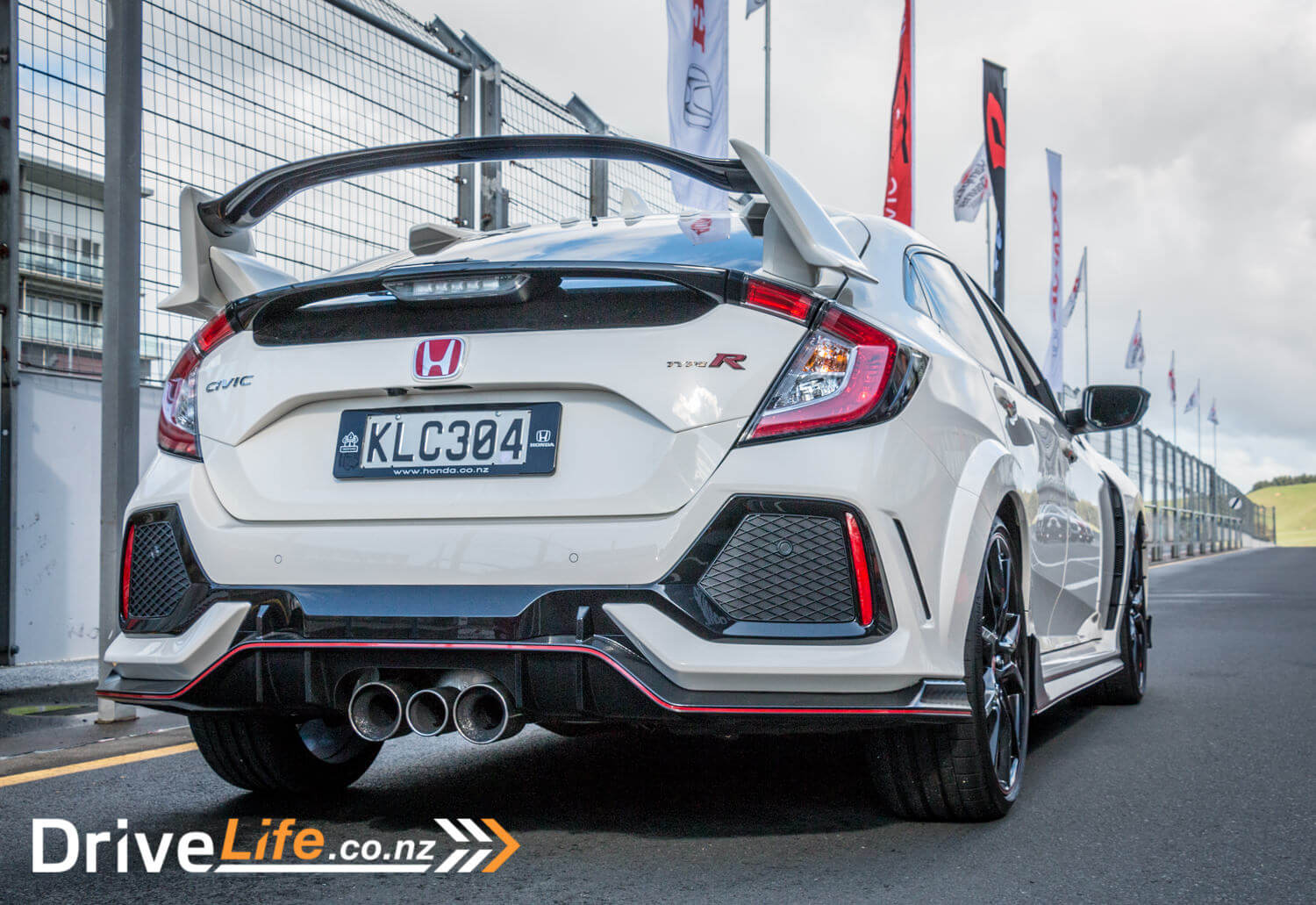
Why the unusual triple exhaust? The main tailpipes on either side deliver exhaust flow from the engine, while the smaller centre tailpipe controls the sound of the engine. To help make the Type-R sound better on acceleration the centre tailpipe acts as a third exhaust exit. But at cruising speeds the pressure in the centre tailpipe becomes negative, sucking in ambient air and eliminating exhaust booming. Clever stuff.

Inside, there are deep, red bucket seats which have the look of race seats but without the discomfort. The rear seats are plain black though, with red belts, and they seem mismatched, which is a shame. There are red highlights and red Honda and Type-R badges liberally spread around. Each Type-R has a serial number plate riveted to the console behind the gear lever. Ours is a pre-production car and has the number R-00000. Pretty cool.
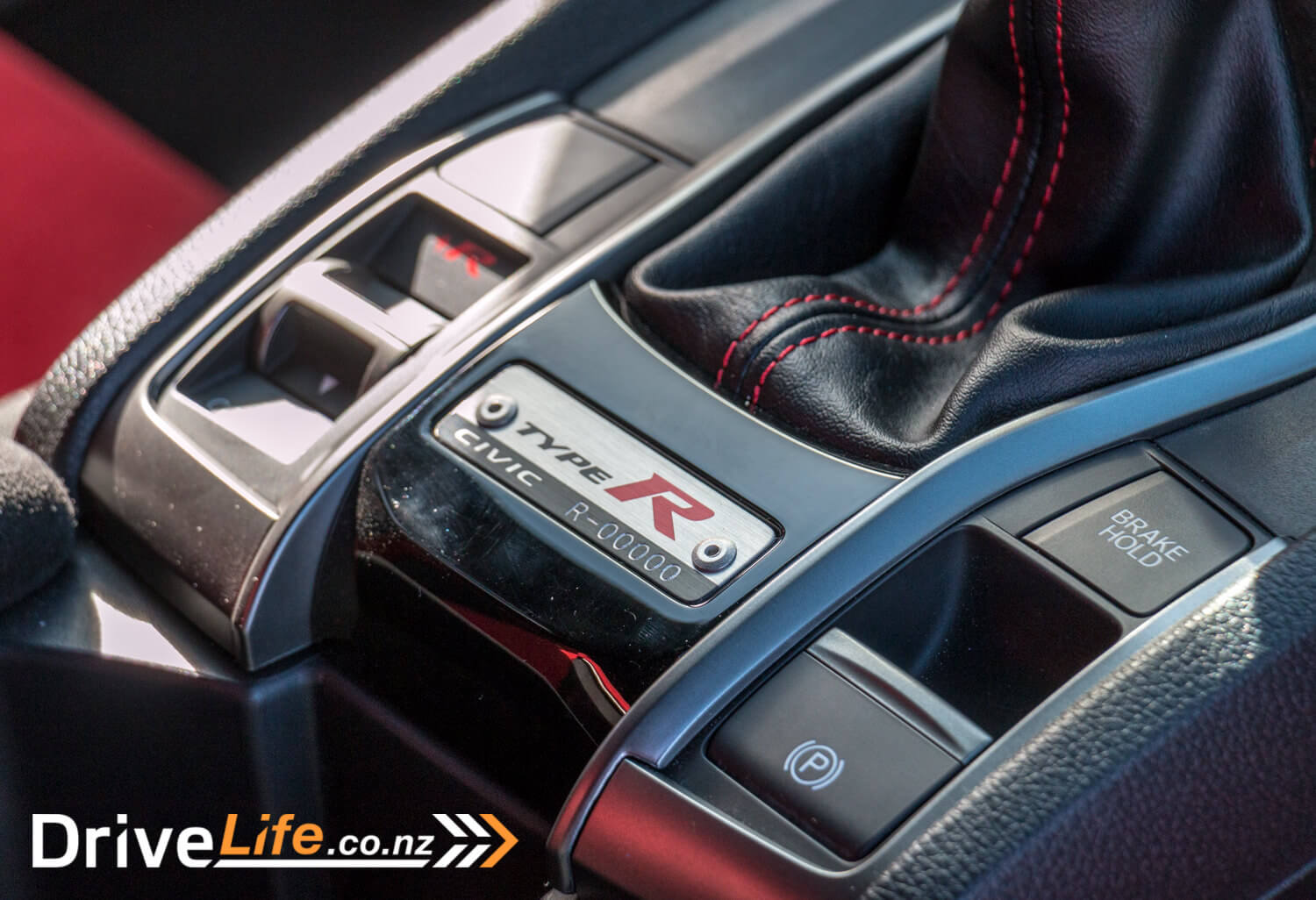
The Drive
It was obvious that this event would provide just a taste of the Type-R experience, as Honda New Zealand only had one demo Type-R to share between around twenty journalists at the event.
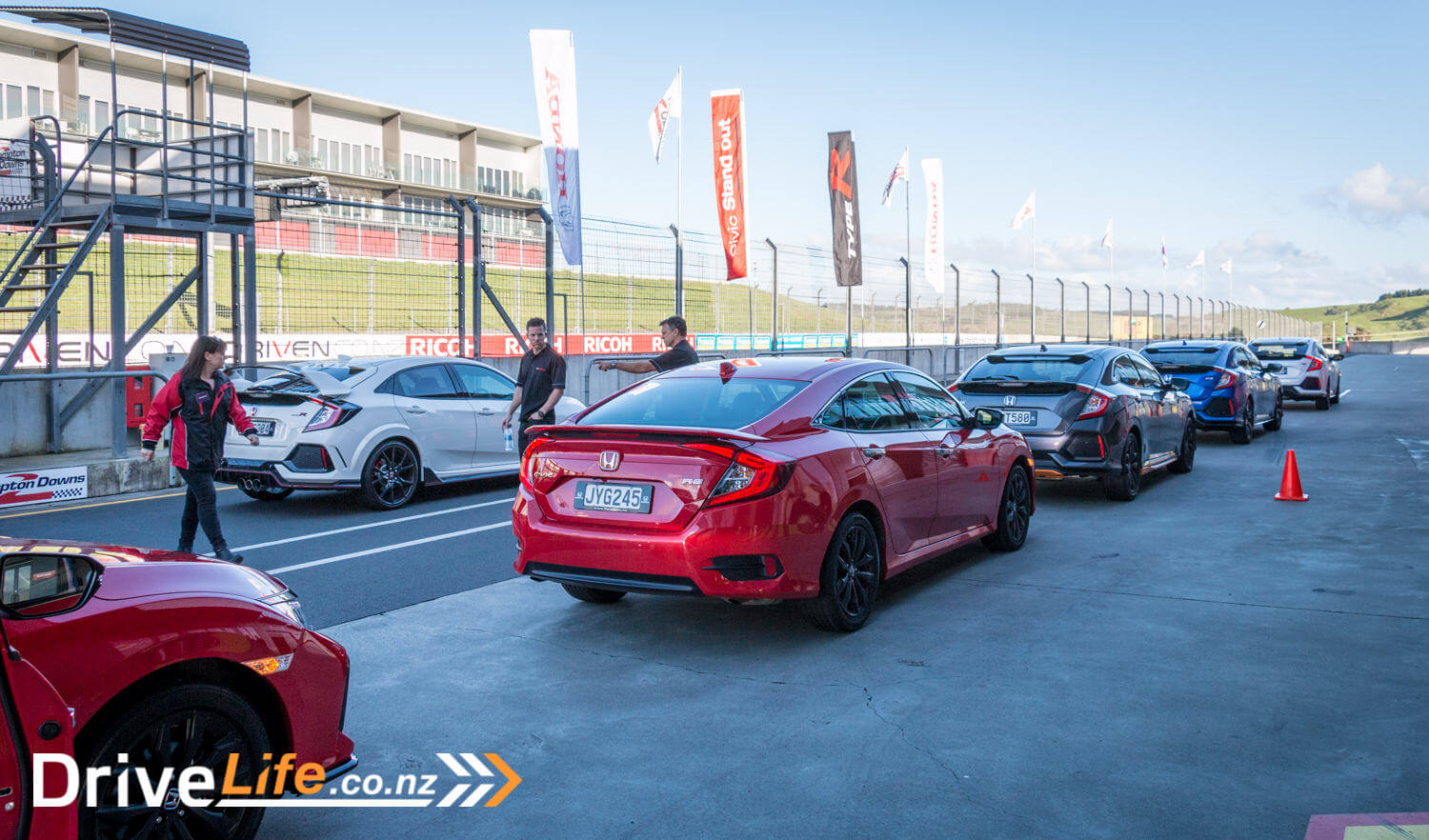
The track drives worked like this: drive the standard Civic in various forms, followed by a 2007 Type-R (the last one to be sold here in New Zealand), then finally the 2017 Type-R.
Because of the limited time available we had three laps in each car. First up I had a Civic Sedan RS with the 1.5T engine and CVT. This was a great warmup to the track and good fun to chuck around. The various electronic systems can’t dial out its tendency to understeer, and I may have given its tyres a fair bit of punishment. A cracking engine though and the CVT works really well on track, which surprised me. Next up, an RS Sport. A very similar experience.
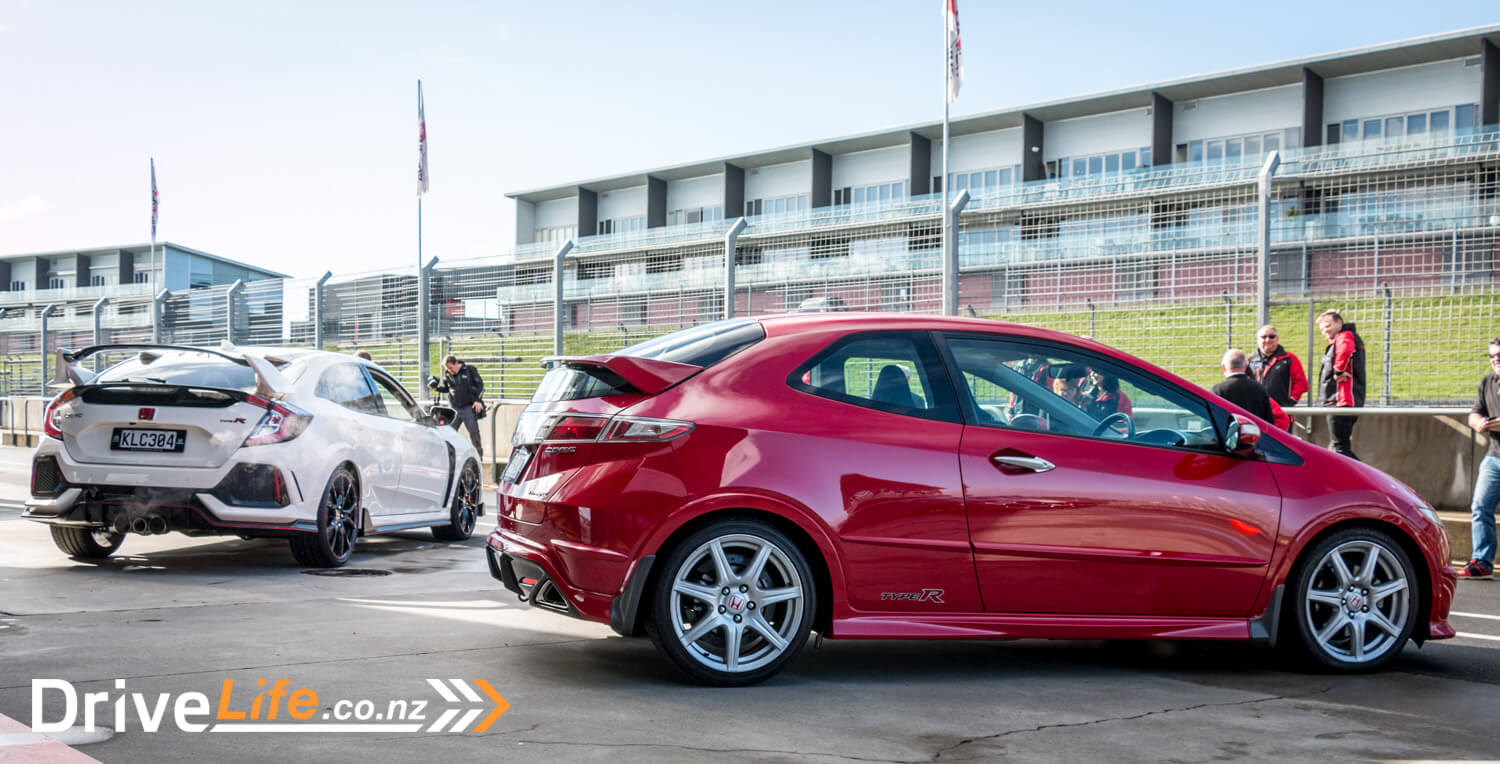
Then I was into the 2007 Type-R. The older car felt very different inside – lower, and darker, with bucket seats, and of course three pedals. Strangely you have to turn the key and push a start button to start the engine. Then the 2017 type-R in front of me was off, and I had to try and keep up. The next three laps were spent with a huge grin on my face. The old Type-R is fun! Quick, lovely tight gear shift (though I did take one corner in 5th, oops), good brakes. A definite tendency to wheelspin, and lots and lots of understeer. Oh and that high-revving VTEC engine sounded great.
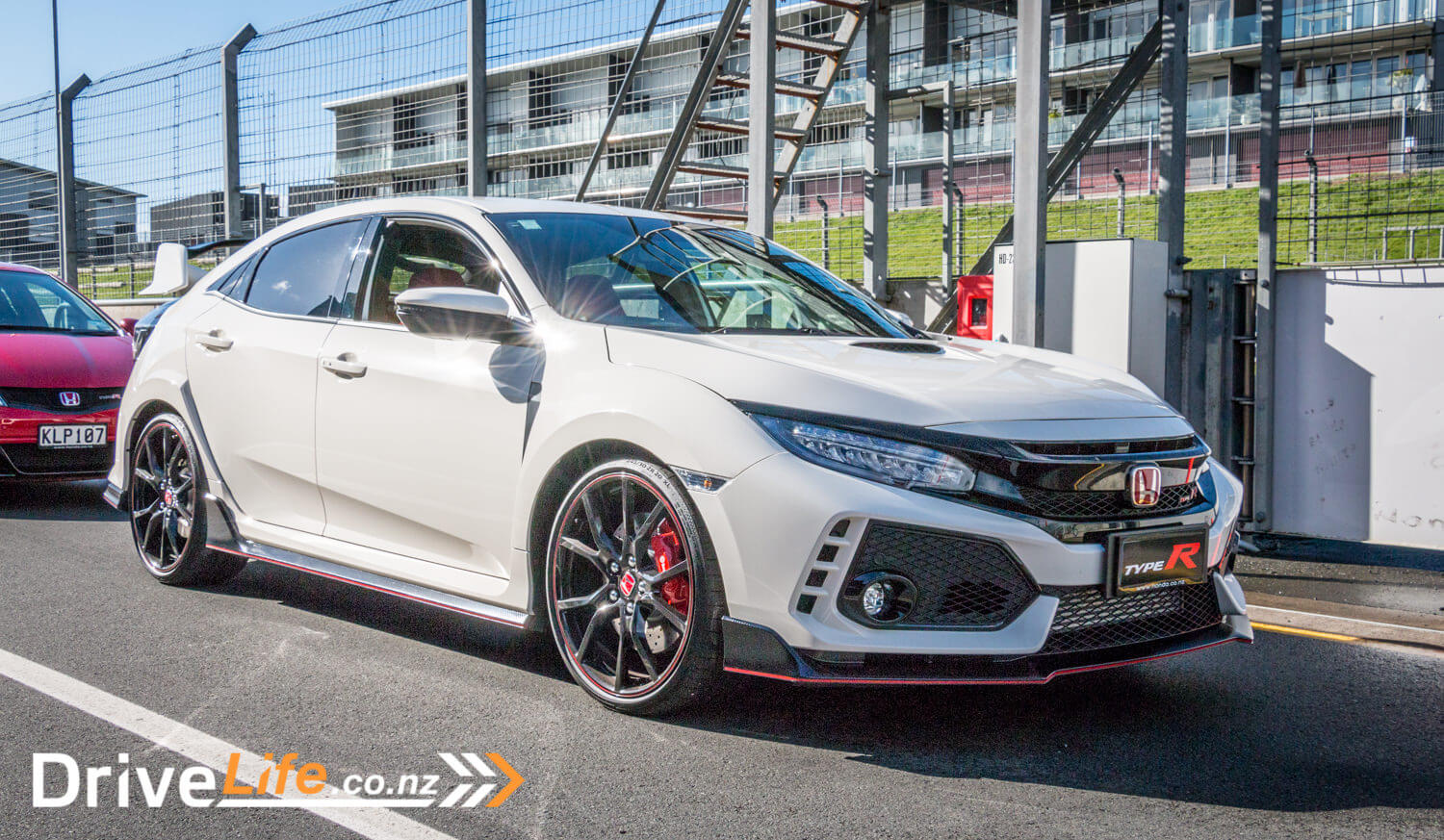
Finally it was my turn in the new Type-R, with a Honda guy in the passenger seat to make sure I didn’t do anything too silly and help me out with racing lines and correct gears. The first lap was done in Comfort mode. First impressions:
Like the older car there’s a lovely tight, short gear shift. The seats are excellent, comfortable and with loads of side support. Foot down out of the first turn, ohhh yes! Great acceleration, very linear and progressive, get to the braking point at much higher speeds than the previous cars.
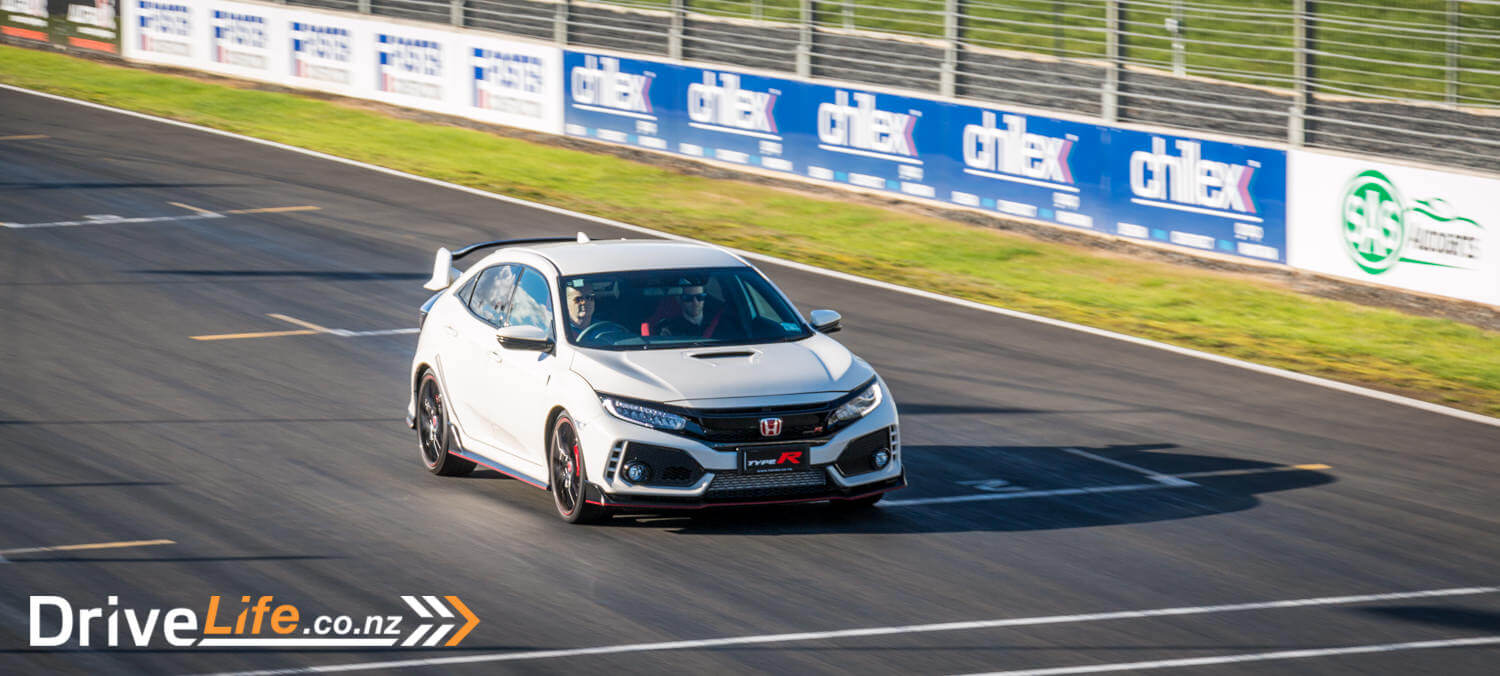
Brembos nice and firm, confidence inspiring, no hint of fading or squirming. Not a hint of understeer as I chucked it hard into the first corner. Hard on the throttle up hill, no torque steer, no lag, just power. Oops hit the rev limiter. Back on the power, downhill into a tight left, no drama, just speed. Chuck it through a cone slalom then a big wide 3rd gear corner up to the start-finish straight. I hit 165 in the 2007 car, had to beat that! Foot flat, hit 175kph. I could have gone faster but I eased off rather than changing up to 4th not long before a hard right.
Then into +R mode. Even more go, tighter steering, firmer suspension. The next two laps are a bit of a blur as I grinned my way through them. Awesome stuff.
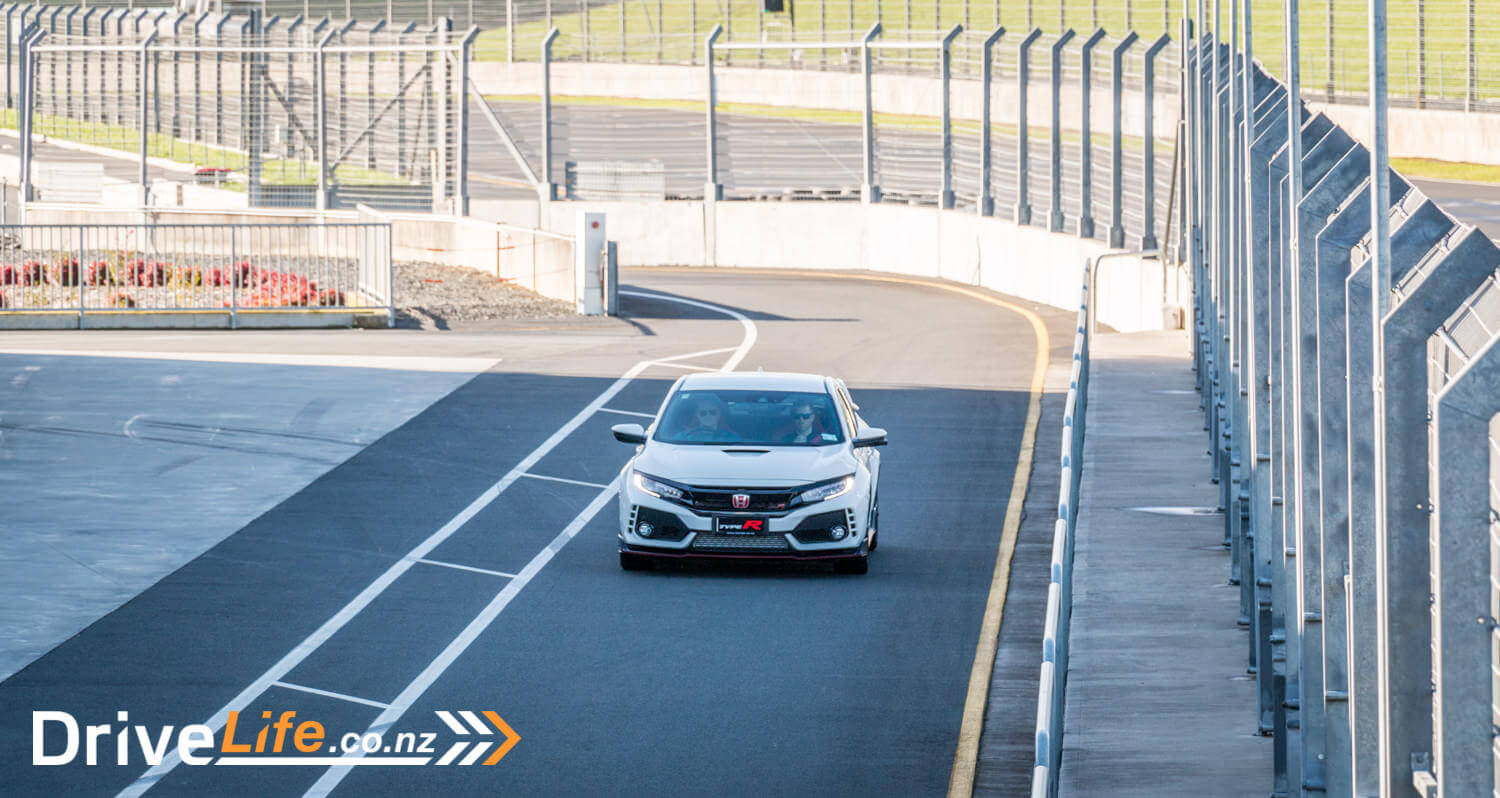
Then it was back into a 1.5t then a 1.8 non-turbo hatch for three more laps with each. The 1.8 was amusingly slow on track and very understeery after the R but is probably a great road car. Like the earlier ones I may have punished its tyres a bit.
Switching between the Type-R and the lower spec models really highlights the huge amount of work that Honda have put into developing and differentiating the Type-R as a performance car. Sure it’s nearly $15k more than the top non-R model, but even though it shares a lot of features, safety and technology it’s an altogether different beast.
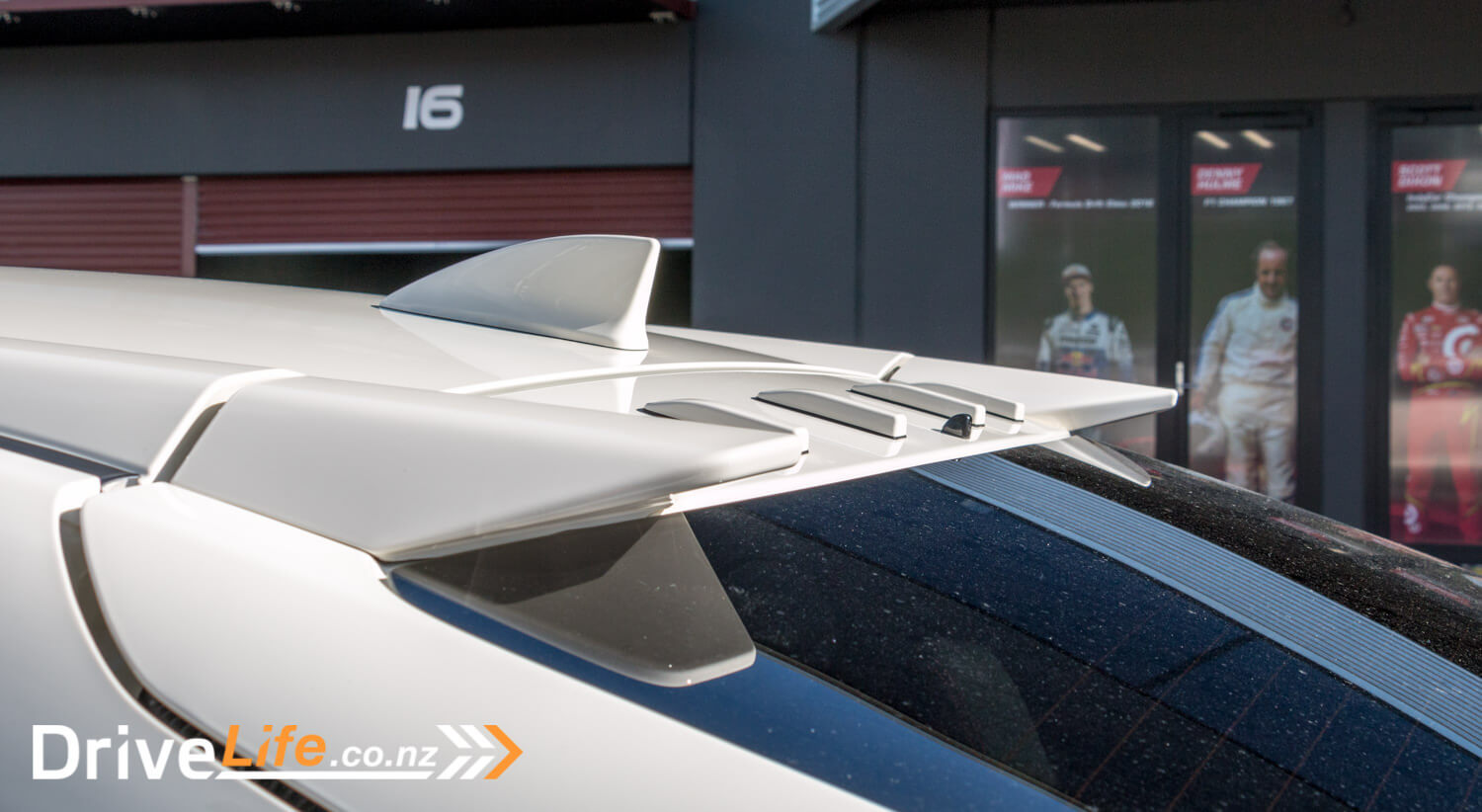
What do we think?
After a couple of days mentally processing this short blast in the Civic Type-R, I’m now hanging out for October when DriveLife are booked to take it for a week-long road test. On the track it’s excellent. How this translates to road use will be interesting to see. The standard Civic is a really good car, so adding lots more power and in-your-face looks surely can’t hurt?
Based on my experience of the Type-R so far I think Honda are definitely onto a winner.
